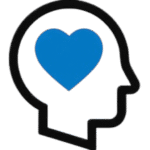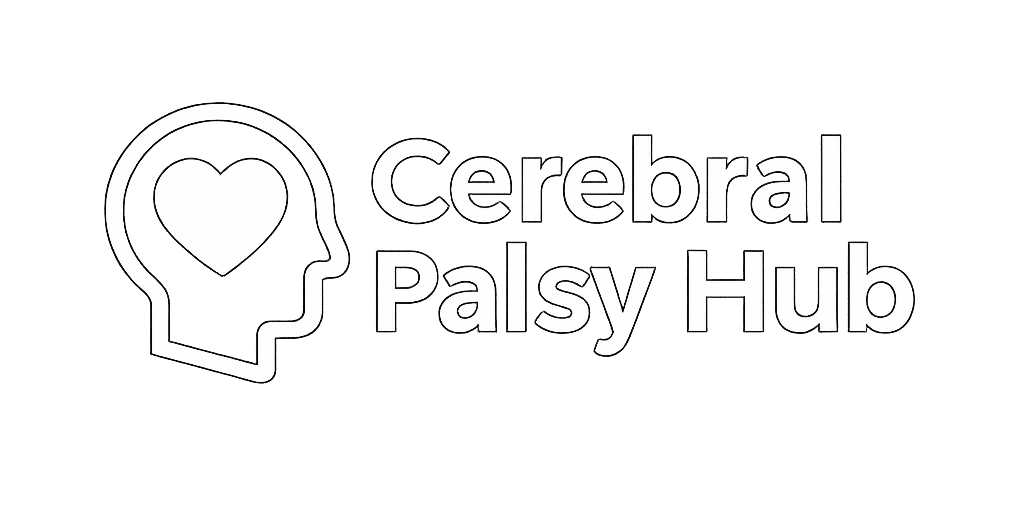Types of Cerebral Palsy
Cerebral palsy (CP) is not a one-size-fits-all condition. There are several distinct forms, all depending on which part of the brain that’s been affected and how it impacts movement, coordination, and muscle tone.
While all cases of CP stem from brain damage or abnormal brain development before, during, or shortly after birth, the way it presents can vary widely from child to child. This is why cerebral palsy is divided into different types. Each one describes how a child moves, how much muscle tone they have, and which parts of the brain and body are involved.
What Are the Different Types of Cerebral Palsy?
Each type of cerebral palsy is categorized into 5 main types. These include spastic, dyskinetic, ataxic, hypotonic, and mixed CP. Each type presents it's own unique symptoms and movement difficulties depending on which part of the brain was damaged.
Spastic Cerebral Palsy
Spastic cerebral palsy is the most common type (about 77% of cases) and is characterized by stiff, tight muscles and awkward movements.
Spastic CP occurs when there is damage to the motor cortex or the pyramidal tracts, the parts of the brain responsible for sending voluntary movement signals to the muscles.
This damage causes the brain to send incorrect or excessive signals, resulting in increased muscle tone (spasticity). The severity and location of the spasticity depend on how much and which part of the brain is damaged.
Common symptoms of spastic CP include:
-
Muscles that are constantly tight or contracted
-
Difficulty with smooth, coordinated movements
-
Limited range of motion in joints
-
Walking with a scissored gait (legs cross)
-
Delays in reaching developmental milestones like crawling or walking
-
Pain or joint deformities caused by chronic muscle tension
Examples:
-
A child may struggle to open their hand when reaching for a toy
-
Walking up stairs may require holding onto both railings due to leg stiffness
-
They may need ankle braces or walkers for stability
Spastic CP ranges from mild to severe, and while some children walk independently, others may need assistive devices or surgery. Early intervention and physical therapy can make a big difference in long-term outcomes for children with birth injuries.
Dyskinetic (Athetoid) Cerebral Palsy
Dyskinetic (Athetoid) cerebral palsy involves uncontrolled, involuntary movements, especially in the arms, legs, and face. Dyskinetic (Athetoid) CP makes up around 2.6% of cases.
This type is caused by damage to the basal ganglia, which is the part of the brain that helps regulate voluntary motor control and posture.
Depending on whether the damage affects how muscles are activated or suppressed, a child may appear to be constantly in motion or unable to maintain steady postures. The muscle tone often fluctuates—sometimes too loose, sometimes too tight—making it hard to sit, stand, or speak clearly.
Common symptoms of dyskinetic CP include:
-
Twisting, writhing, or jerking movements (athetoid or choreoathetoid)
-
Muscle tone that changes frequently throughout the day
-
Difficulty holding onto objects due to hand and arm instability
-
Facial grimacing, excessive drooling, or trouble swallowing
-
Trouble speaking due to uncontrolled tongue or mouth movements
-
Movements that worsen with stress, excitement, or fatigue
Examples:
-
A child’s arms may wave uncontrollably while trying to feed themselves
-
Their mouth muscles may make speech slurred or hard to understand
-
Simple tasks like holding a crayon can take repeated attempts
Dyskinetic CP can be especially frustrating for children because their minds may be sharp, but their bodies don’t cooperate. Communication devices and occupational therapy can be very helpful, though more severe cases may require ongoing care and support.
Ataxic Cerebral Palsy
Ataxic cerebral palsy is one of the least common types of CP (around 3-6% of cases) and causes problems with balance, depth perception, and coordination.
This type is caused by damage to the cerebellum, the part of the brain that controls fine motor movement and balance. Because of this damage, children with ataxic CP may appear shaky or unsteady, especially during tasks requiring precision. Speech and hand movements are often slow, slurred, or poorly controlled.
Common symptoms of ataxic CP include:
-
Shaky or unstable movements when walking or reaching
-
Difficulty with tasks requiring fine motor control (writing, using utensils)
-
Poor coordination and balance
-
Wide-based, unsteady gait
-
Speech that is slow and breathy or slurred
-
Difficulty with eye-hand coordination and quick changes in movement
Examples:
-
A child may fall frequently while walking across uneven surfaces
-
They may struggle to zip up a jacket or write their name
-
Carrying a cup without spilling can be very difficult
Ataxic CP is usually less severe than other types, but it can still affect daily function and confidence. Regular physical and occupational therapy can build coordination over time, and many children make significant progress with ongoing support.
Hypotonic Cerebral Palsy
Hypotonic cerebral palsy is an extremely rare form (less than 3% of cases) which causes low muscle tone, making children appear floppy, weak, or overly flexible.
This type often results from more diffuse or poorly localized brain damage, sometimes affecting both the cerebellum and motor pathways.
Because the muscles receive weak or inconsistent signals from the brain, a child may struggle to hold up their head, sit upright, or initiate movements. Unlike other forms of CP, movements are not jerky or involuntary—they’re just slower, softer, and more effortful.
Common symptoms of hypotonic CP include:
-
Limp posture and weak head or neck control in infants
-
Delayed motor milestones like sitting or crawling
-
Poor muscle strength and endurance
-
Difficulty chewing, sucking, or swallowing
-
Joints that are overly flexible (hypermobile)
-
Breathing or speech that lacks strength or control
Examples:
-
A baby may flop over when lifted under the arms
-
Older children may tire quickly during physical activity
-
They may need trunk support to sit upright in a chair
Hypotonic CP is often harder to identify early but can impact independence if not addressed. Targeted therapies can help improve strength and stability, making everyday activities easier and more comfortable.
Mixed Cerebral Palsy
Mixed cerebral palsy includes symptoms from two or more types of CP, most commonly spastic and dyskinetic. Mixed CP makes up about 15% of cases.
This form happens when there’s widespread or multiple areas of brain damage, such as injuries affecting both the motor cortex and basal ganglia.
Because more than one motor system is disrupted, children can experience both stiffness and uncontrolled movements. This variability can make treatment and diagnosis more complex.
Common symptoms of mixed CP include:
-
Stiff legs combined with uncontrolled arm or facial movements
-
Frequent changes in muscle tone throughout the body
-
Speech and swallowing difficulties due to mixed tone in facial muscles
-
Challenges with balance, posture, and movement planning
-
Seizures or cognitive impairments in more severe cases
-
Need for multiple therapies to manage overlapping symptoms
Examples:
-
A child may use a wheelchair but also have sudden facial twitches
-
They might speak clearly some days and slur words on others
-
They may need multiple specialists (PT, OT, SLP) to manage mixed symptoms
Mixed CP can range from moderate to severe, often requiring customized, multidisciplinary care. Because multiple systems are involved, families often depend on a combination of therapies, support services, and long-term planning.
Types of Cerebral Palsy by Body Regions Affected
Cerebral palsy isn't just classified by the type of movement disorder, but also which part of the body is affected.
Cerebral palsy is also classified by the affects on different parts of the body depending on where the brain injury occurred. These terms—like hemiplegia, diplegia, or quadriplegia—describe which limbs or areas are impacted and how much, depending on what part of the brain was damaged.
Monoplegia
Monoplegia typically affects just one arm or one leg. It’s often caused by a localized brain injury or mild form of hemiplegia.
Hemiplegia
Hemiplegia affects the arm and leg on the same side, usually from damage to one side of the brain. The arm is typically more impaired than the leg.
Diplegia
Diplegia involves muscle stiffness in both legs, while the arms are usually mildly affected or normal. This is common in children born prematurely with periventricular leukomalacia (PVL) in the brain’s white matter.
Triplegia
Triplegia means three limbs are involved, usually both legs and one arm. It often results from a more extensive brain injury that affects one hemisphere more than the other.
Quadriplegia
Quadriplegia (or tetraplegia) is the most severe form, affecting all limbs, the torso, and sometimes facial muscles. It often stems from a global brain injury, such as oxygen deprivation during birth.
Double Hemiplegia
Double hemiplegia is a rare subtype where both sides of the body are affected, but not equally. It’s often mistaken for quadriplegia but has slightly more movement on one side.
How Is the Severity of Cerebral Palsy Classified?
To better understand a child’s abilities and needs, specialists often use a severity classification system called the Gross Motor Function Classification System (GMFCS). This scale ranks how independently a child can move and function in daily life.
This system helps therapists tailor interventions based on the child’s current level of independence and monitor progress over time.
A child's movement capability by each level:
Cerebral Palsy Levels of Severity
-
Level I: Walks without limitations; mild balance or coordination issues may exist.
-
Level II: Walks with limitations, especially on uneven surfaces or stairs.
-
Level III: Needs hand-held mobility aids; uses a wheelchair for longer distances.
-
Level IV: Limited self-mobility even with aids; may use powered mobility devices.
-
Level V: Severe mobility limitations; dependent on others for most physical movement.
Legal Help and Compensation for Families
If your child’s cerebral palsy may have resulted from a birth injury, medical complications, or delayed care, it could be related to preventable factors. A CP diagnosis can bring emotional and financial challenges for families, especially when lifelong care and therapies are needed.
Types of Cerebral Palsy FAQs
 Written and Medically Reviewed by:
Written and Medically Reviewed by:
Cerebral Palsy Hub Team
Cerebral Palsy Hub was founded to help support children and their families with cerebral palsy and to create a safe space for those affected. We strive to provide the most accurate, up-to-date information, and tools to help give your child the life they deserve.
Last Updated: September 2, 2025
